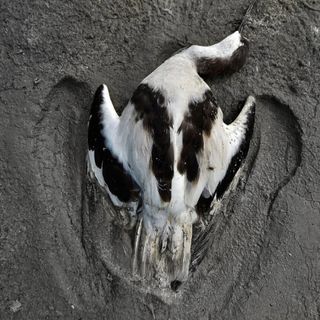In the last week of October, a massive raid took place across six Indian states after two months of planning, as a part of ‘Operation Clean Art’ — a coordinated effort by the Ministry of Environment, Forests, and Climate Change, the Central Bureau of Investigation, and various state police and forest departments.
Law enforcement officials who conducted the raid seized more than 50,000 paintbrushes made of mongoose hair, along with more than 100 kilograms of raw mongoose hair. 49 people were also arrested in connection to this illegal trade, Mongabay India reports.
“This illegal trade is a thriving multi-crore industry that results in the death of thousands of mongooses across India every month,” Sibi Arasu writes in Mongabay. He explains the brushes made out of mongoose hair make for finer brush strokes, and are extremely durable, leading to their high demand among artists in India, and across the world.
But, this trade of mongoose hair is entirely illegal — all mongoose species found in India are protected under Schedule II (Part II) of the Indian Wildlife (Protection) Act, 1972, which prohibits the hunting, possession, transportation, and trade of the animals. The mongoose is also covered under the Convention on International Trade in Endangered Species of Wild Fauna and Flora, which completely bans all commercial trading of it. And yet, due to the high demand for mongoose-hair paintbrushes and a lack of awareness about the wildlife crime necessary to produce them, the illegal trade of mongoose hair continues to thrive as a multi-crore, international business.
This has led to the endangering of the mongoose. As H.V. Girisha, regional deputy director of the Wildlife Crime Control Bureau, who was part of the raid, explains to Mongabay: an estimated 50 mongooses are killed for one kilogram of mongoose hair; one mongoose yields only 20 grams of “good hair.” But it’s good business. Mongabay reports that by the time 1 kilogram of pure mongoose hair is sold to a buyer in the form of paintbrushes, it can be worth as much as Rs. 100,000.
Related on The Swaddle:
One Million Species Face Extinction Because of Humans: UN Report
“When I have spoken to informants and people who are involved in this business, they say it has been going on for many decades now,” Jose Louies, chief of the wildlife crime control division at the Wildlife Trust of India, tells Mongabay. Out of six species of mongoose found in India, the Indian grey mongoose is the most common and the most hunted; traditional hunting communities across India hunt the animal and sell it, forming the first link in the supply chain of this illegal trade. While most of the brushes are produced in Sherkot, Uttar Pradesh (also known as the ‘brush capital of India’), the supply chain extends to Rajasthan, Kerala, Karnataka, Maharashtra, Tamil Nadu, Uttarakhand, and West Bengal. Speaking to National Geographic a few years ago, Louies said the demand chain for these paintbrushes is mostly driven by international trade sold directly to buyers in the U.S., Europe, and the Middle East.
While the government is happy with the progress it’s making to stop the trade in mongoose hair, the word on the ground is slightly different. Maksud Ali Mondal, a 26-year-old artist based in Santiniketan, told Mongabay, “I know for a fact that these brushes are still available here and that many artists use it. … They don’t seem to be concerned where it is coming from or how it was made, only that it is giving them the result that they like. This is highly problematic.”
Though some artists and most large art product companies have moved away from using mongoose-hair paintbrushes, they are still the preferred choice in traditional centers of fine art, such as Kolkata and neighboring Santiniketan. As the next step, the government plans to reduce the demand for such brushes by spreading awareness among artists, schools, and anyone else purchasing them. They also plan to wean the indigenous communities involved in this business away from it and rehabilitate their livelihoods.
As for the consequences of tens of thousands of mongooses being killed annually in the name of art, Louies says: “We won’t notice its disappearance because who really looks at mongoose, but one day they would suddenly just not be there.”




